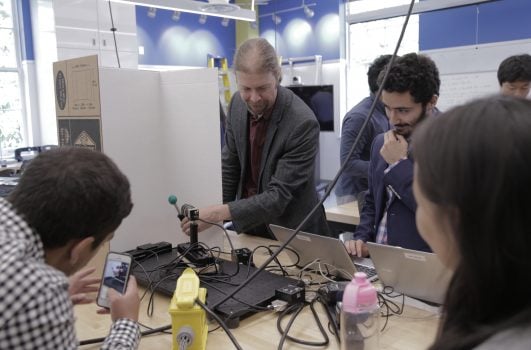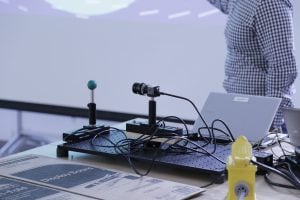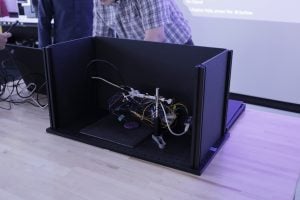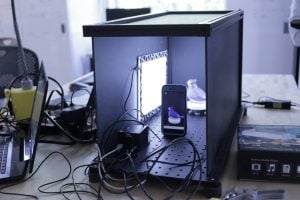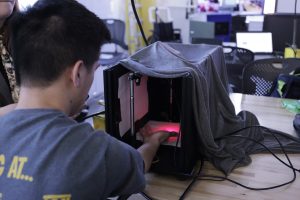Johns Hopkins students in the upper-level Imaging Instrumentation course showed off their year-end projects in late May in the BME Design Studio. Taught by Web Stayman, an assistant professor in the Department of Biomedical Engineering, the undergraduate and graduate students demonstrated projects that ranged from a system to replicate an endoscopic procedure to a method of measuring blood flow in the body.
“I was excited to see the students leveraging all of the hands-on experience they have gained throughout the semester, and applying those skills in final projects of their own design,” says Stayman. “This year, the class had four excellent imaging system designs developed, constructed, programmed, and optimized using knowledge from the first-half of the class.”
Throughout the semester, the students gained hands-on experience with the characterization, integration, data processing, and evaluation of imaging systems. After undertaking a series of labs for the first half of the course, they applied what they’ve learned to complete their own team projects. In the BME Design Studio in Clark Hall, teams presented designs to an audience of students and faculty.

